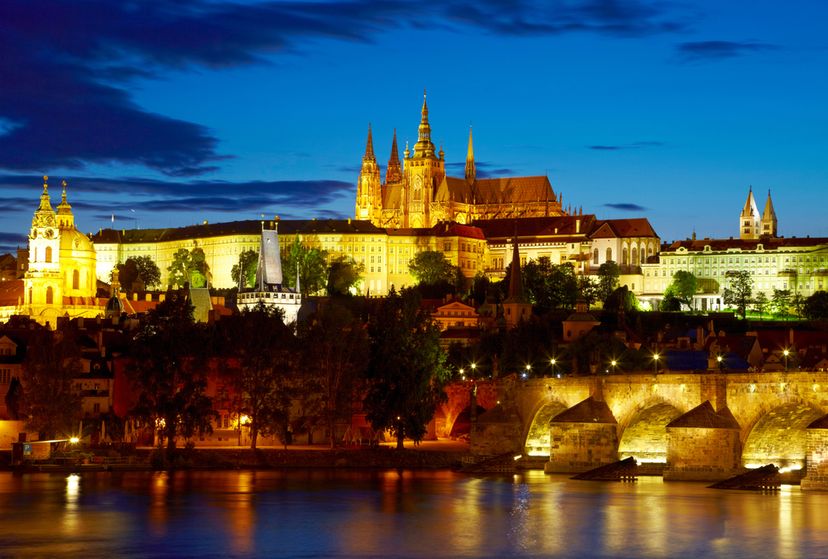
Prague was one of the few cities in Europe to be spared from bombing during WWII, making it one of the most precious and well-preserved historical spots in the world. In fact, many films set in 19th and 18th century London are filmed in this enchanting city that is one of the last remaining remnants of the Old World. With buildings dating back to the Middle Ages, Prague is now a well curated mix of Baroque, Renaissance, Gothic revival, and Art-Nouveau architecture that is connected by an intricate web of cobblestone pathways and historic bridges.
Advertisement
15. Wenceslas Square
Just around the corner from Old Town Square and the Statue of Jan Hus is Wenceslas Square, a bustling area in one of the main squares of Prague. Located in New Town, there is nothing new about this thoroughfare, which was commissioned by Charles IV in 1348. Originally serving as a horse market, the centrally located square is a good spot to end a walking tour since it’s easy to get to historic hotspots like the Charles Bridge and the Prague State Opera. Wenceslas Square has also been the meeting place for political rallies and protests over the decades, a grand area in a city full of symbolism and tumultuous history. The statue in front of the National Museum serves as a reminder of the good King Wenceslas on his horse. Considered the patron saint of the Czech Republic, the King was murdered by his brother over 1,000 years ago.
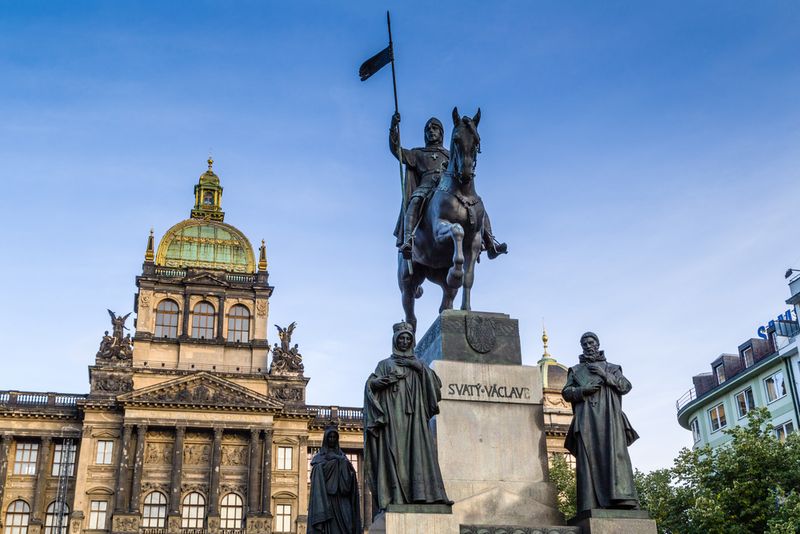
14. Statue of Jan Hus
Further along the Old Town Square is the Statue of Jan Hus, a large memorial depicting the Protestant reformer who spoke out against the extravagance and corruption of the Catholic Church, particularly the Vatican. In the Middle Ages, there was little mercy for heresy and Jan Hus was no exception. Even though he received a letter of safe conduct from the Emperor, he was imprisoned for a year before being burned at the state in this very spot in 1415. His martyrdom sparked a revolt of Hussites who led a path of destruction across cities and villages. In response, Pope Martin V declared war on the heretics, which was the beginning of a long battle between the Catholic Crusaders and the Protestant Hussites. The colossal statue was the labor of love for Czech sculptor Ladislav Saloun, an autodidact artist who was heavily influenced by the works of Auguste Rodin.
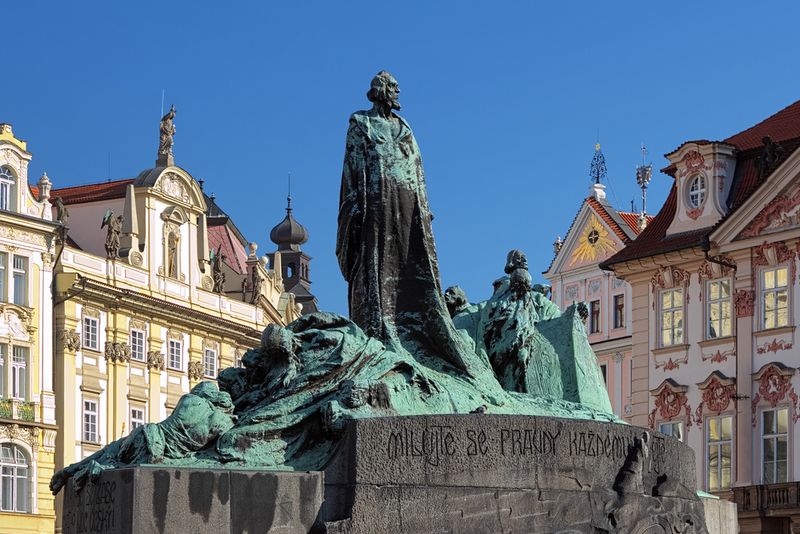
13. Old Town Square
In the historic Old Town Square, the Prague Orloj is one of its cherished artifacts and the oldest working clock in the world. Installed in the Old Town Hall in 1410, the medieval astronomical clock is one of the wonders of the ancient world. Meander down the street and you’ll discover the Gothic style Church of Our Lady before Tyn that dates back to the 14th century. Other architecture styles stand out, like the Baroque style St. Nicholas Church. After taking in all the sights, stop in for an evening dinner at Bellevue, a lovely upscale restaurant overlooking the Vtlava River. Situated in a chateau-like building, the interior mixes modern and traditional for an elegant and romantic ambiance. In the summer months, they open up their terrace for dining al fresco, an extraordinary treat in the heart of the Old Town.
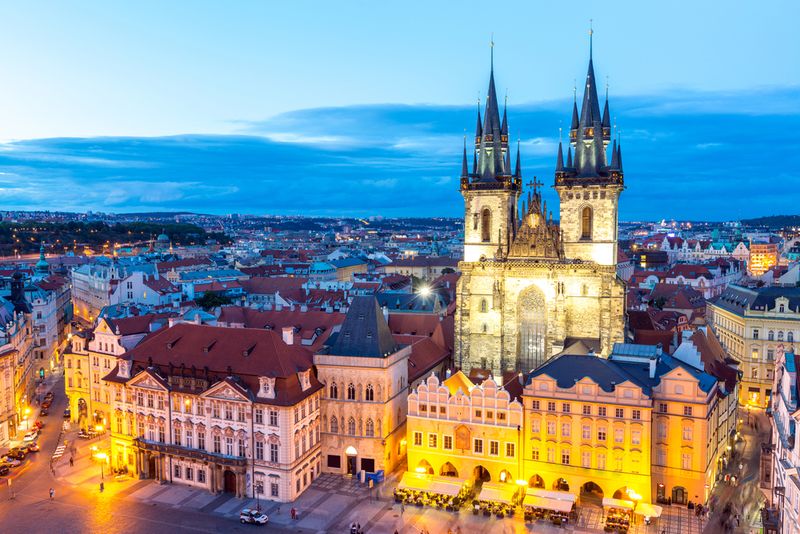
12. Kinsky Palace
After a short stroll over Charles Bridge, you’ll come to the Old Town of Prague and Kinsky Palace, an 18th century mansion that is now home to the National Gallery of Prague, a state-owned art collection and the largest of its kind in the country. Standing out with a stucco exterior, intricate pink and white detailing, and Rococo design, the Palace is full of elegant, classical elements both inside and out. But there’s more to see than the notable architecture. Art history buffs will swoon over their favorite artists up close and in person with a collection including works by Monet, Van Gogh, Cezanne, and Renoir, plus 2 rooms dedicated to Picasso. The gallery also features the Rodin busts and figures that had a profound impact on 20th century Czech sculpture.
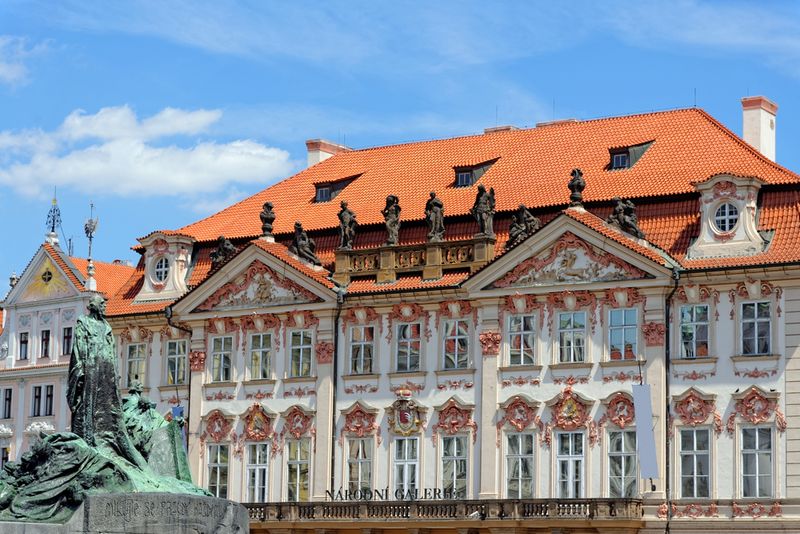
Advertisement
11. Charles Bridge
Strolling across the bridge is a favorite activity for Czech locals and tourists, especially the cobblestone, pedestrian-only Charles Bridge that spans the Vltava River. Construction of the Bohemian sandstone bridge began in 1357 and finished sometime in the early 15th century, resulting in a mix of stunning Gothic style towers and Baroque statues and statuaries. Although replicas have replaced many of the originals, the Charles Bridge is considered a rare architectural achievement in preservation and design. Today, the historic bridge still retains its old world glory but without the horse carriage tracks. With a fairytale view of the Old Town and Prague Castle, the Charles Bridge is popular among filmmakers and has been featured in hit movies like Immortal Beloved, The Bourne Identity, and Casino Royale. Today, it is still a mecca for artists like Ylevgeni Shtchemenko, an oil painter who uses the city’s most famous landmark as a backdrop.
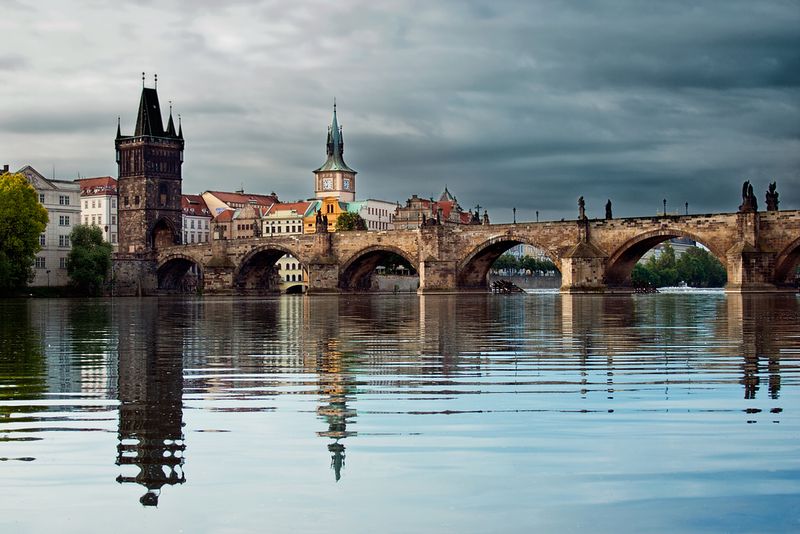
10. Church of Our Lady of Unceasing Succour
On your way to the main square of the city, stop by the Church of Our Lady of Unceasing Succor and get a close look at Gothic Revival and Baroque architecture. Like many buildings in Prague, the church went through a series of transformations beginning with the original wooden structure being rebuilt as a Gothic stone chapel in the Middle Ages. After the addition of a large cathedral in the early 16th century, architect Octavio Braggi restored the crumbling church with a layer of detailed Baroque style that was popular in the 1800s. Located in the Nerudova neighborhood, the seven chapels were built to represent the seven succours of the Virgin Mary. Riding on the coattails of the Czech National Revival, religion took a back seat and the church was converted into a theater from 1834 to 1837 and was known for its plays by Czech writers.
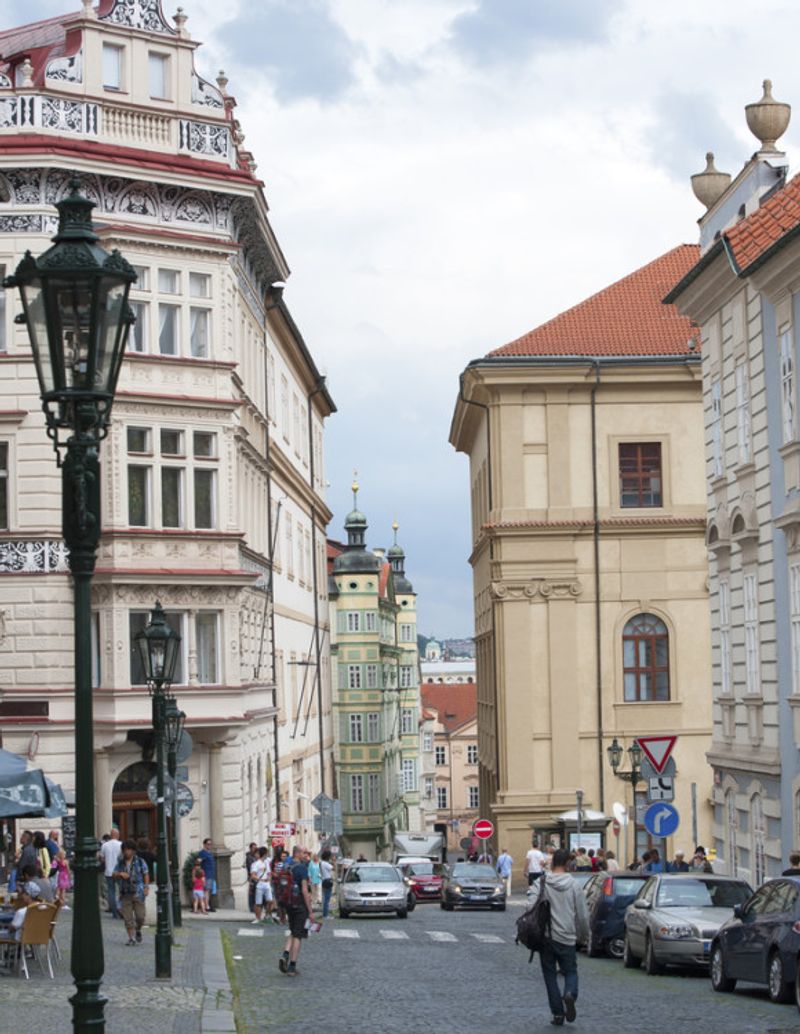
9. Municipal House
Located near Old Town Square, the Municipal House underwent major renovations in the 1990s, making it one of the most prized and striking examples of early 20th century Art Nouveau. Built on the former site of a medieval estate, the building was designed by the best artists in the world and considered the pinnacle of architectural achievement to come out of the Czech National Revival. Every aspect of the interior is unmistakably Art Nouveau, including the stained-glass canopy and wrought iron railings. As you walk through the mansion, you’ll discover paintings and sculptures rich with symbolism and often depicting ancient myths and folklore. A striking example of this trend is Homage to Prague, a mosaic situated at the entrance and highlighting the struggle and rebirth of the Czech people. Today, the civic building is still home to Smetana Hall, a concert venue since the building opened in 1912.

8. Bretfeld Palace
The old Renaissance buildings and facades still stand majestically on the hillside overlooking the historic city. Along the ancient path, you’ll pass by the Bretfeld Palace, a Renaissance style mansion and the former hangout for celebrities like Casanova and Mozart. Just outside of the Prague Castle, get lost on Nerudova, one of the most iconic streets in Prague. Centuries of peasants, aristocrats, and cultural luminaries walked these same cobblestoned streets, and at night, stumbled home and viewed the same starry sky. Imagine the spectacle of caviar and absinthe-fueled nights in the Baroque style mansion and Mozart drinking champagne in a dinner tuxedo and partying like it’s the 18th century. During the Romantic era, these were the old stomping grounds of artists and musicians who were inspired by the rich and layered culture of the Czech people.
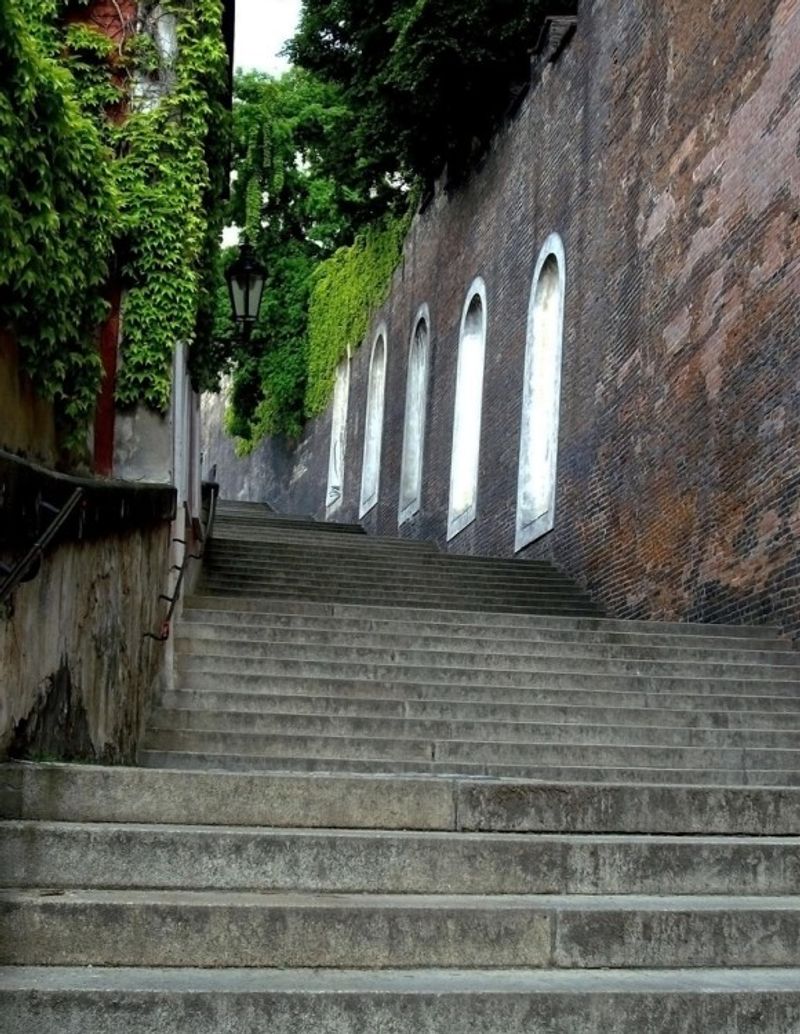
7. Prague Castle
Dating back to the year 870, the Prague Castle in Hradcany has seen its share of wars, fires, and other disasters over the centuries. Still going strong today, thanks to ongoing renovations, it is the gem of Prague and the largest ancient castle in the world. Standing majestically on the hill overlooking Charles Bridge and Old Town Square, Prague Castle is a well-preserved relic of Baroque architecture. With several palaces, churches, and halls, visitors can get happily lost in an intricate maze of Baroque and Gothic-style structures. It also boasts one of the best city views in Prague, so take your time with a stroll outside the castle walls on ancient stone pathways. Along the way, don’t forget the domed ceilings of Vladislav Hal or the Gothic towers of Saint Vitus Cathedral. And if you look hard enough, you might find the Czech Crown Jewels, the fourth oldest in Europe.
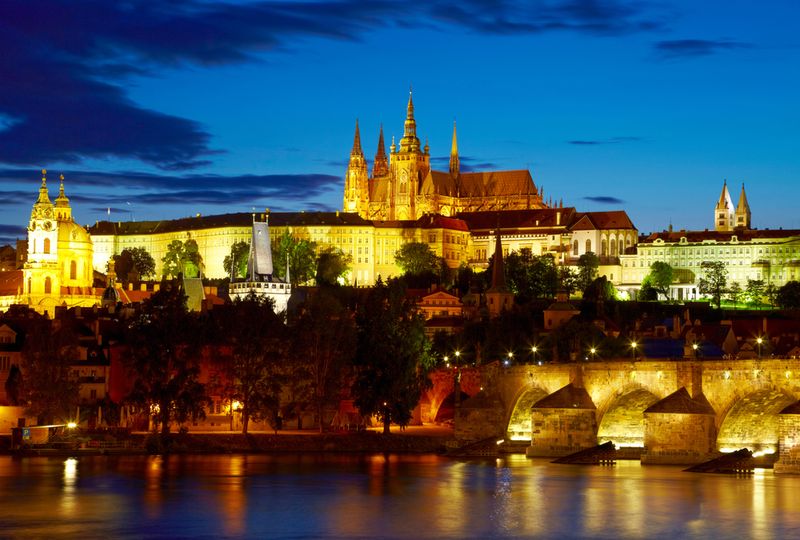
Advertisement
6. Rudolfinum Theater
Considered to have the best views of the river and Prague Castle, the Rudolfinum Theater is one of the finest and best-preserved historic landmarks in Prague. Opened in 1885, the theater was originally used as a multipurpose cultural performance space until 1919 when it became home to the House of Commons of the Czechoslovak Republic. During the German occupation in WWII, it began hosting concerts again, and in 1992, it underwent major renovations to feature the best artists and musicians in the country from the Czech Philharmonic and Rudolfinum Gallery. Like most buildings in Prague, the 19th century theater has a tumultuous timeline. Originally designed as an entrance hall, the Dvovana Ceremony Hall contains 25 curious empty spaces on the wall, the result of an artist boycott of the 1891 fresco competition in protest over the large number of German artists involved with the design of the building.
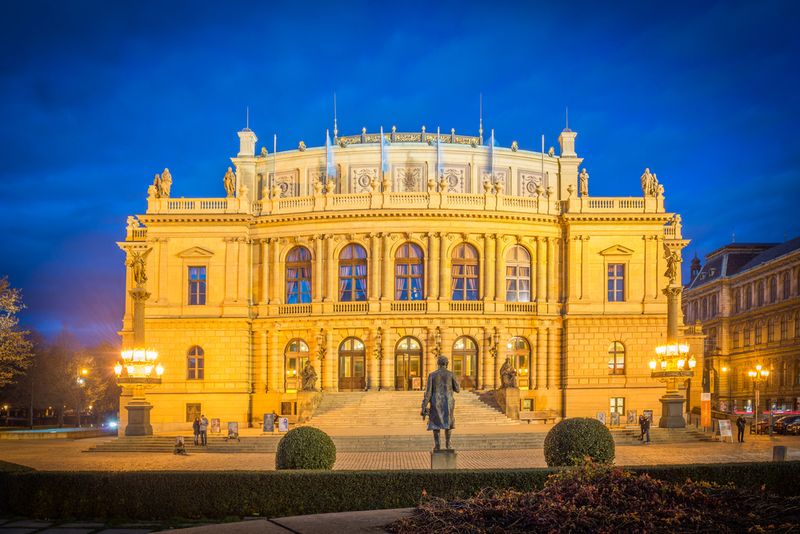
5. Paris Street
On trendy Paris Street you’ll find a mix of Neo-Renaissance, Neo-Baroque, and Classical style buildings in one of the most striking neighborhoods in Prague. Stroll down the sidewalk and you’ll find designer clothing, traditional Czech glass, and antique stores fill with ancient treasures. Another notable piece of history is Hotel Paris, an art-nouveau luxury hotel that dates back to 1904. Built with grand facades and intricate details, the structure was built to celebrate the prestige and wealth of Prague in the early 20th century. Today, it still dazzles visitors with its vintage elegance and charm. Make your stay even more memorable and indulge in the Tower Suite, a luxury room built within the hotel tower and with stunning views of Prague Castle and the Old Town.
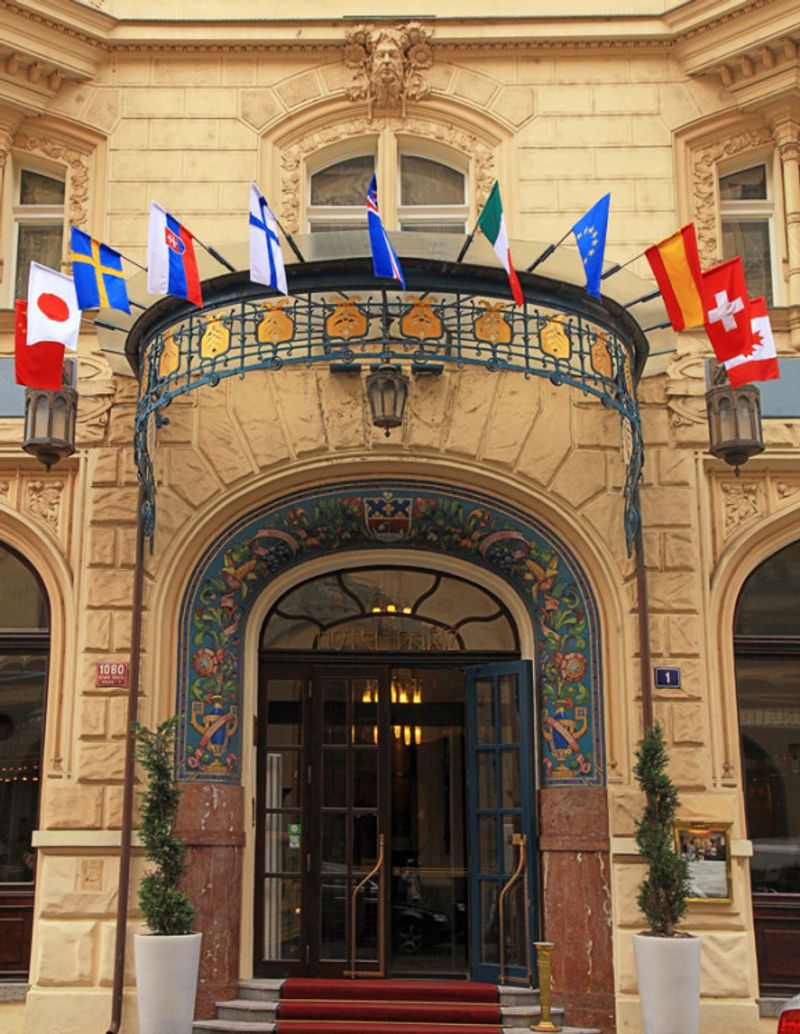
4. Grand Café Orient
Prague might be known for its ancient Renaissance and Baroque architecture, but the city also encourages the avant-garde, making it a mecca for cubists and modernists who are inspired by layers of history. One of the most unusual layers is represented in the Grand Café Orient, the only cubist style structure in the world. With its simple geometric shapes and lack of classical perspective, the architecture of the cubists was undergoing a transformation between the old world and the modernity of the early 20th century. The result is a quirky retro vibe that encapsulates the unique Czech contribution to the cubist movement. Located on the first floor of the House of the Black Madonna, get a closer look at the elegant café and stop in for a coffee and croissant.

3. Charles University
Established in 1348, Charles University in the Old Town of Prague is the oldest college in the Czech Republic and considered one of the best in the world. If you find yourself in the area, it’s worth stopping by the Karolinum, a set of buildings that dates back to the 14th century, making it the oldest structure on campus. Although the façade is mostly original stone, the interior was renovated in the Baroque style in the early 18th century. Today, the building is officially revered as a National Cultural Monument of the Czech Republic. Like many universities of the medieval era, the university was modeled after the University of Paris with 4 faculties–theology, law, medicine, and arts. Founded by Pope Clement VI by the request of Holy Roman Emperor Charles IV, the university is full of medieval relics, tradition, and legends from the early days of Prague.
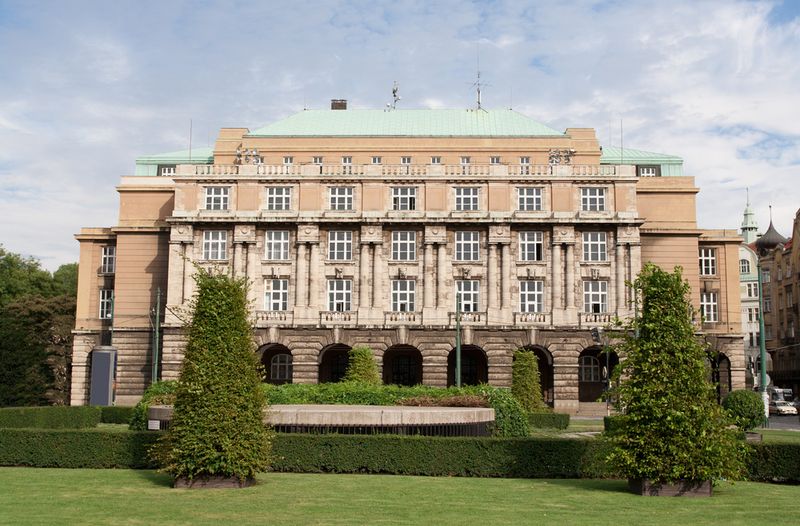
2. Tyn Church
Officially known as Church of Our Lady before Tyn, the Tyn Church is a glorious Gothic-style cathedral in Old Town Square and considered a cherished historic landmark. Since it was establishing in the 14th century, the church has served as the main cathedral since medieval times. Taking over a century to build, the church is a magnificent, well-preserved relic with its towers topped by spires and a Baroque altarpiece featuring works by Karel Skreta from the 17th century. It also contains the oldest pipe organ in the world, making it a rare example of 17th century organs in Europe. According to legend, the cathedral inspired Walt Disney’s depiction of the castle in Sleeping Beauty. If you look closely, you might notice that the towers are not symmetrical. One represents masculine and the other feminine, a common symbolism of Gothic architecture from that period.
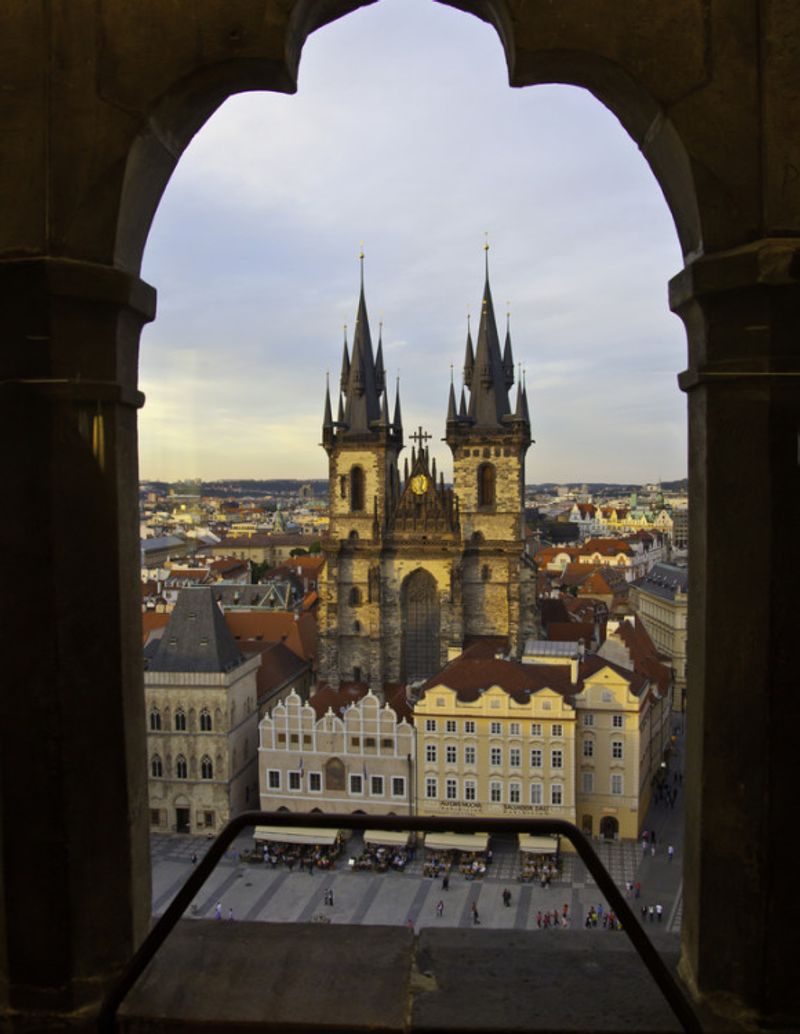
Advertisement
1. Estate Theater
In a legendary, breathtaking performance in 1787, Mozart made his world debut of his opera Don Giovanni at the Estate Theater, a historic building and training ground for famous musical luminaries. The building was spawned from the Enlightenment, a period of thought that encouraged the importance of public access to arts and culture. Today, it still retains all if its Baroque and Classicist splendor as well as the dedication to all things Mozart, particularly his operas. You might recognize the grand interiors from Amadeus, the Mozart biopic directed by Czech director Milos Forman. For a closer look, put on your evening best and head to the opera for a night of old world opulence and classical music. Just like the aristocrats but without the top hats or corsets, view the same stage that hosted some of the most historic performances of all time.
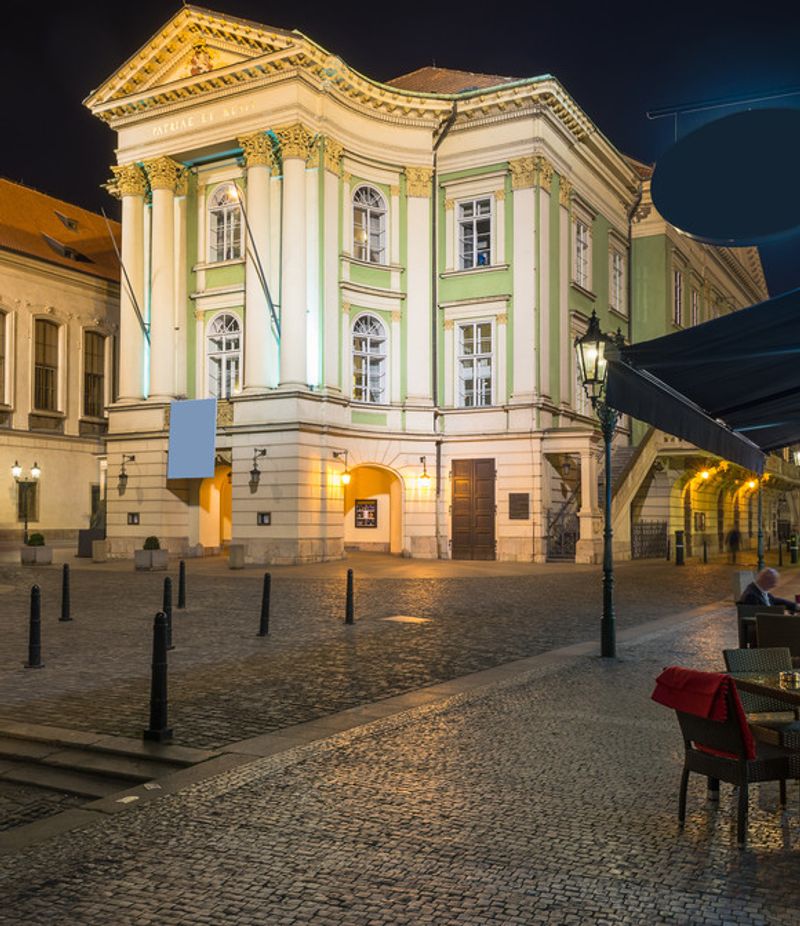
Advertisement